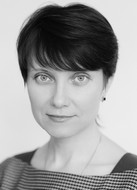Gender-specific myocardial electrophysiology rating in uncontrolled sporting groups
Фотографии:
ˑ:
PhD, Associate Professor I.A. Pogonysheva1
PhD, Associate Professor D.A. Pogonyshev1
Master's student N.V. Kurtukova1
1Nizhnevartovsk State University, Nizhnevartovsk
Based on prior questionnaire survey data, two groups of the Nizhnevartovsk State University students were sampled for the study purposes: Group 1 was composed of the students engaged in systemic sports and physical trainings under control of professional coaches; and Group 2 was composed of the uncontrolled (self-reliant) sport activists. At the second stage of the study, the gender-specific myocardial electrophysiology in both of the groups was tested and analyzed using the computerized cardiac functionality screening CardioVizor-06с system. The test data were used to analyze the ECG dispersions, rate the myocardial functionality in the uncontrolled Group 2 – that is exposed, among other things, to the harsh climatic and geographic Northern conditions of extra burden on the bodily physiological systems. The study data were indicative of the sub-morbid disorders in myocardial electrophysiology in 29.8% and 35.6% of the female and male subgroups, respectively; and possible pathologies in the cardiac function were diagnosed in 12.8% and 22.2% of the female and male subgroups, respectively.
Keywords: computerized cardiac functionality screening system, myocardial electrophysiology, physical load, premorbid conditions.
References
- Baranov A.A., Kuchma V.R., Skoblina N.A. et al. Osnovnye zakonomernosti morfofunktsionalnogo razvitiya detey i podrostkov v sovremennykh usloviyakh [Basic laws of morphofunctional development of children and adolescents in modern conditions]. Vestnik Rossiyskoy akademii meditsinskikh nauk [Herald of the Russian Academy of Medical Sciences], 2012, no. 12, pp. 35–40.
- Bokareva N.A. Veduschie faktory, formiruyuschie fizicheskoe razvitie sovremennykh detey megapolisa Moskvy. Dis. dokt. med. nauk [Leading Risk Factors for Disorders of the Morphofunctional Status in Children and Adolescents. Doctoral diss. (Med.)]. Moscow, 2014, 272 p.
- Ivanov G.G., Sula A.S. Metod dispersionnogo kartirovaniya EKG v klinicheskoy praktike [The method of ECG Mapping Dispersion in Clinical Practice]. Moscow, 2008, 46 p.
- Ivanov G.G., Aleksandrova M.R., Dvornikov V.E. et al. Uspekhi klinicheskogo primeneniya metoda dispersionnogo kartirovaniya [Dispersion mapping method: success of clinical application]. Vestnik RUDN. Ser. Meditsina, 2013. [Electronic resource]. Available at: https://cyberleninka.ru/article/n/uspehi-klinicheskogo-primeneniya-metod... (date of access: 25.02.2018).
- Ispolzovanie pribora «KardioVizor-06s» dlya skriningovykh obsledovaniy. Metod dispersionnogo kartirovaniya. Rukovodstvo dlya vrachey [CardioVisor-06s device for screening studies. Dispersion mapping method. Doctors' guide]. Moscow, 2004, 23 p.
- Pogonysheva I.A., Pogonyshev D.A. Funktsionalnoe sostoyanie serdtsa studentov, zanimayuschikhsya sportom v usloviyakh Severa [Academic sports in Far North: sporting students' heart functionality tests]. Teoriya i praktika fiz. kultury, 2017, no. 6, pp. 99-101.
- Pogonysheva I.A., Pogonyshev D.A. Osobennosti morfofunktsionalnykh parametrov organizma molodykh lyudey, prozhivayuschikh v raznykh klimatogeofizicheskikh usloviyakh okruzhayuschey sredy [Specific morphofunctional characteristics of young people living in different climatic and geophysical environmental conditions]. Vestnik Nizhnevartovskogo gosudarstvennogo universiteta, 2017, no. 1, pp. 68-74.
- Programmnoe obespechenie dlya skriningovykh issledovaniy serdtsa KardioVizor-06s: Rukovodstvo polzovatelya [CardioVisor-06c Cardiac Screening Software: User's Manual]. Meditsinskie kompyuternye sistemy [Medical computer systems], 2006. 76 p. [Electronic resource]. Available at: http://www.mks.ru/netcat_files/209_32.pdf
- Yampolskaya Yu.A., Skoblina N.A., Bokareva N.A. Longitudinalnye issledovaniya pokazateley fizicheskogo razvitiya shkolnikov g. Moskvy (1960-e, 1980-e, 2000-e gg.) [Longitudinal studies of physical development indicators in schoolchildren in Moscow (1960s, 1980s, 2000s)]. Vestnik antropologii, 2011, no. 20, pp. 63-70.




 Журнал "THEORY AND PRACTICE
Журнал "THEORY AND PRACTICE